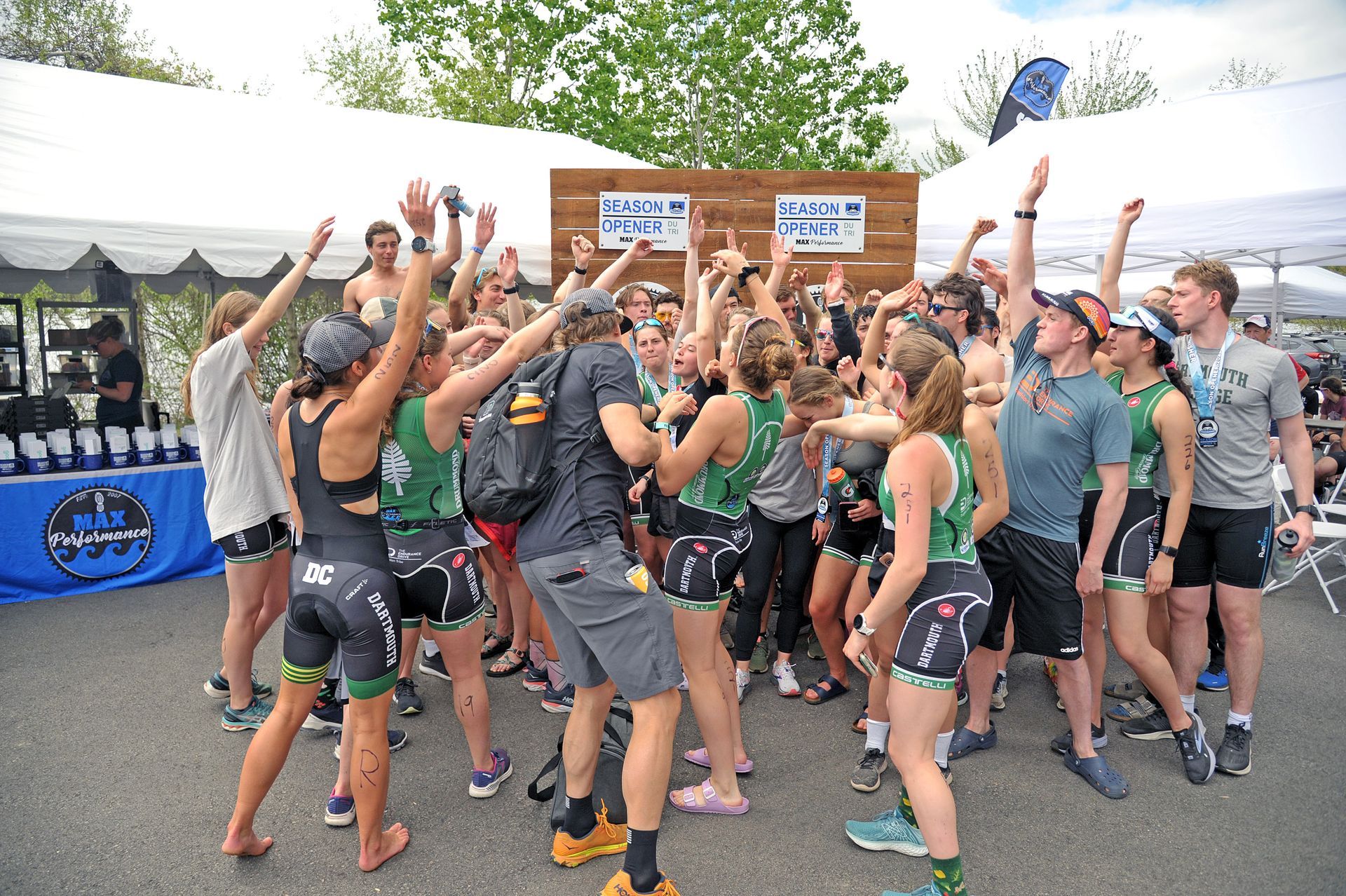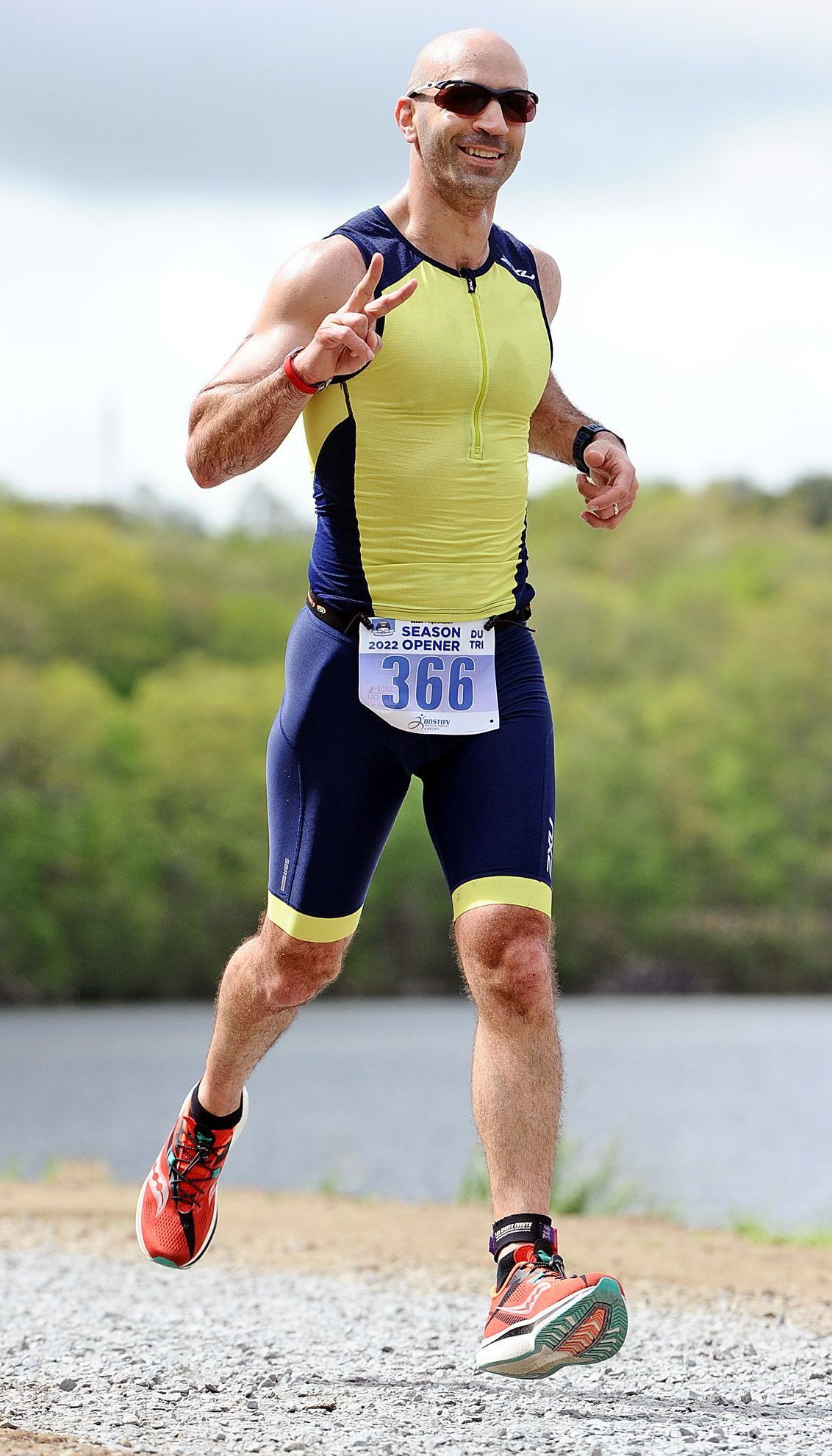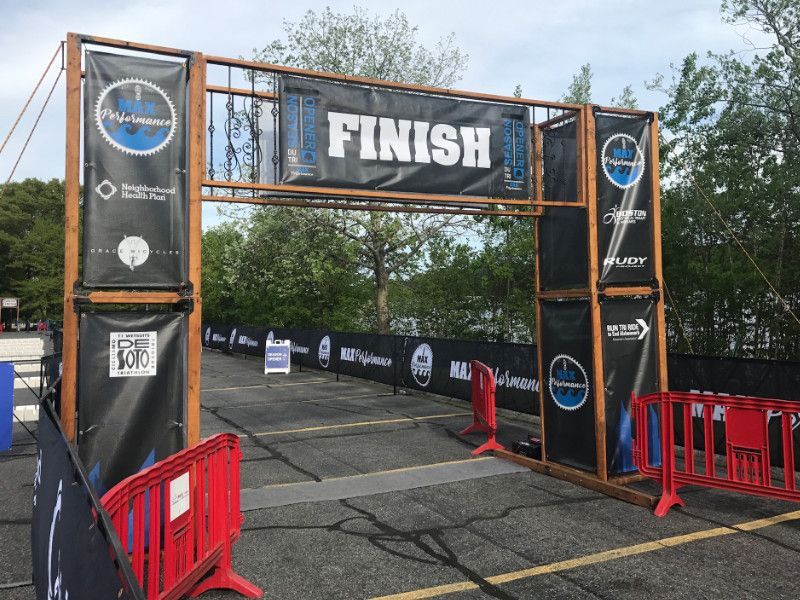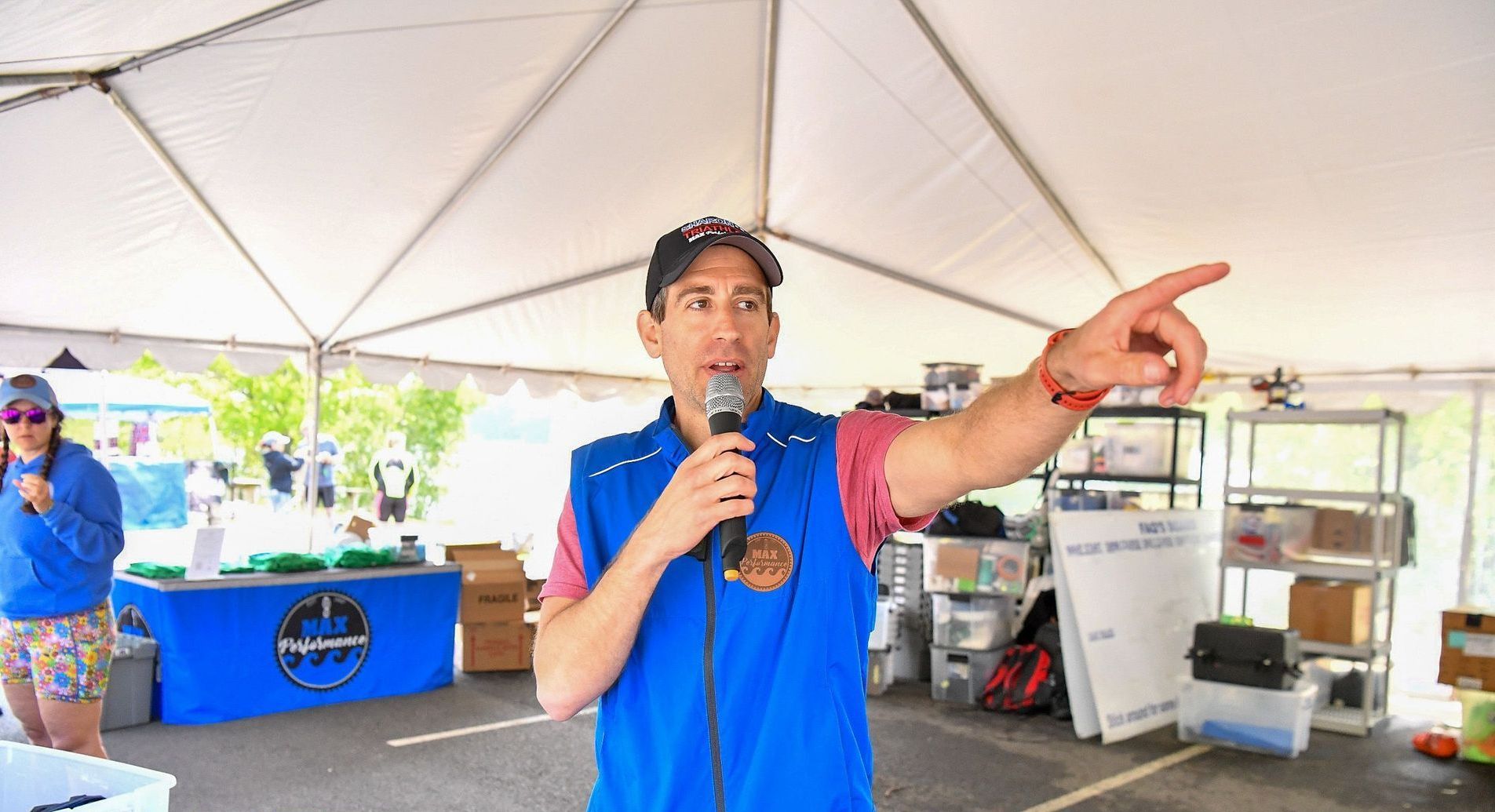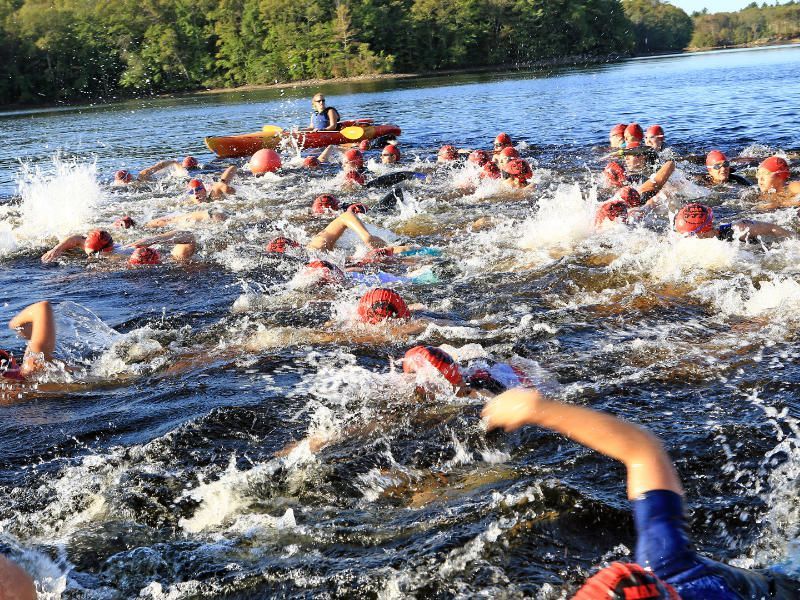BEGINER TRIATHLETE: FAQ
Many of you have requested some tips for your 1st race, so we gathered the most Frequently Asked Questions for you to read. For our general FAQ, please Click Here.
BEGINNER FAQ
We're proud that many of our racers are new to the sport of triathlon. We've curated a list of Frequently Asked Questions you might have - as well as some you didn't even know to ask. So keep reading - and good luck on race day!.
To view our general FAQ, please
Click Here. If you have questions regarding our refund policy, transfers, cancellations, media policies, or other similar questions, please
Click Here.
If you have further questions, then please contact us via our General Inquiries page.
-
What are some reasonable goals for my 1st multisport race?
Depends on your fitness level but you can’t go wrong with:
- Finish tired but feel good about my new accomplishment
- Know where you can improve on for the next race
- Push myself so I don’t “leave too much on the course”
- Meet other multisport athletes to share experiences with
- Do some math on what each component should take individually, then add transition times (2 of them) and “fatigue time” for a total estimate
-
What time should I arrive?
Be there early! Remember, you need to park, pick up a packet, get body marked, set up your transition area spot, oh and use the restroom! Get there for at least 90 minutes prior to the start of your race. Don’t be that guy running late. At Max races, we close registration 30 minutes prior to the start of each event. You will not be allowed to race after this time. It puts major anxiety on everyone if you’re late, including race staff who need to stay on schedule. So do your diligence and arrive early!
-
I've heard that training is better if it follows certain blocks or periods. What is this type of training and is it effective?
Yes, it’s very effective. Sounds like you might also benefit from the Newbie Hotline. So, please use the Contact Us form and drop us a note and we’ll explain more details by phone.
-
Where do I affix my race numbers?
There will most likely be three to affix. One on the front of your helmet, one on your race shirt in the front (or race belt) and the third on the frame of your bike. Check out our Video that we made and posted on YouTube!
-
What should I know about the Transition Area (TA)?
Main things are to:
- Get organized in the row that corresponds to your race #
- Rack your back tire in the bike rack and set your towel and gear to the right of the bike
- Mountain bike owners should consider ignoring their assigned spot and rest their bike on the “Mountain Bike Island” in the TA and organize their gear there
- You must walk or run your bike in and out of the TA – do not ride it in the TA
- 3-4 Max RDs are in the TA to answer questions before and during the race.
-
How do I find my Transition Area spot?
Your bib # corresponds to your TA spot. Each row is marked with a sign at the end that shows the bib #s that below to that row, then each spot is specifically marked.
-
Have any bike tips to make the ride safer and faster?
Tons – we publish them in our monthly newsletters. Here are some:
- Ride under control and pass on the left only
- Tell other riders you’re passing them
- Feather your brakes before each turn
- Watch out for painted circles on the road marking bad patches
- Remember to hydrate during the ride if you can
-
Do I have to memorize the bike and run courses?
While you don’t need to memorize the courses, you should familiarize yourself with the general course layout. Max Performance always has volunteers and police at key intersections to guide you through the day!
-
Are there time limits and cutoffs?
At every event, we want to ensure a safe and enjoyable experience. We monitor each segment of the event and establish standards that athletes should generally follow. It’s important to remember that you should be able to complete each segment of the event individually and consider ‘brick’ workouts prior to each event.
-
Where can I find USAT rules?
An abbreviated version is linked to every Athlete Packet near the last few pages.
-
Where do I wear my Timing Chip?
Fasten it to your ankle before the race starts; we recommend your left ankle to avoid possible conflict with your bike chain.
-
What do I wear during the race and when do I put it on?
Here is a great article on Triathlete.com
Men – pick up a pair of tri-pants online or at Grace Bicycles and wear them the entire race. The shirt should be a wick away type. You can put it on under a wetsuit before the swim or before you start the bike portion if you didn't wear a wetsuit.
Women – generally most wear a sports bra under a tri top or bathing suit. Some just wear a tri top that has a supportive enough inner bra. Tri pants work for women also or they slip on bike pants after the swim over their bathing suit, then take them off before the run.
-
Do I wear my race number during the swim portion?
Not usually. Body marking will suffice. Some triathletes wear their race shirt under their wetsuit with the number on it though. Also see the Race Belt FAQ below.
-
What's the best way to show your race numbers for race speed and picture opportunities?
Buy a race number belt and fasten your number to it prior to the race start. Loop the belt on your handle bars and put it on before the bike portion of the race.
-
How can I get faster times on the bike portion of a triathlon?
Short answer – train more on the bike. Since the bike represents around ½ of total race time, it should not be underemphasized too much. We will provide you some really great bike tips if you send us an email request.
-
How much do I eat before a race?
Since this is for beginner triathletes, we’re assuming you're doing Sprints or Olympic distance races. Therefore, you do not have to eat too much race morning, especially if you ate a balanced meal the night prior. Keep it reasonable (e.g. bagel, banana and sports drink) and test out your proposed race day breakfast plan before a training session to see if it fits.
-
What do I consume during a race?
Usually just a sports drink, water and maybe a gel or two. Solid food is difficult to convert to energy within the time frame your body needs it.
-
I would bet there are some things to avoid in my first few triathlon races. What are some of the more common traps to watch out for?
- Going out too fast in the swim – we recommend going out slowwww. It’s much easier to pick up the pace as you get in a swim groove and the wave thins out then it is to get your composure and catch your breath because you went out too quickly.
- Accelerating your training program too quickly – competitiveness can help cause you to want to go faster and/or farther too soon. You can give it a shot but your risk of injury is probably commensurate. Try and incrementally add to your speed and mileage throughout your season at a practical and comfortable rate, e.g. 10-15% is a reasonable increment.
- Never do something new on race day! – sometimes it’s a wetsuit, nutrition gel and/or piece of equipment. It may work out, but it will increase added complexity or stress. So, we recommend staying in your comfort zone and mimic race day everything prior to the race. Try new things in training before making them part of your race routine.
- Eating too much on race morning – all the articles on carb-loading, glycogen and ironman stuff dominate the tri-media. It generally doesn’t apply to Sprint or Olympic distance races though. So, eat a reasonable amount 2-3 hours (yes, that’s getting up real early) before the race, maybe equivalent to what you’ve done before a hard workout – hint, see above.
- Not doing enough open water swimming – This is probably the most common reason for 1st tri panic attack on the swim. Realistically, even after your 1st triathlon, you need additional time in the open water to get used to the feeling of not being between lane lines, having people surround you and sighting towards buoys.
- Not resting enough before the race – and we don’t mean the day before. Many triathletes train very hard the week of the race and don’t give their muscles enough time to heal and get rested. Are you really gaining necessary fitness the week of a race or disproportionately risking injury? So, try the “taper” thing the week of the race by cutting pretty far back on training (e.g. 40-50%). Workout at comfortable paces to keep your muscles loose and trust your preparation and race day excitement to have a good race.
stay up to date
Get MAX'S NEWSLETTER
Sign up for our Monthly Training & Racing Newsletter - and learn about exclusive discounts as well!
